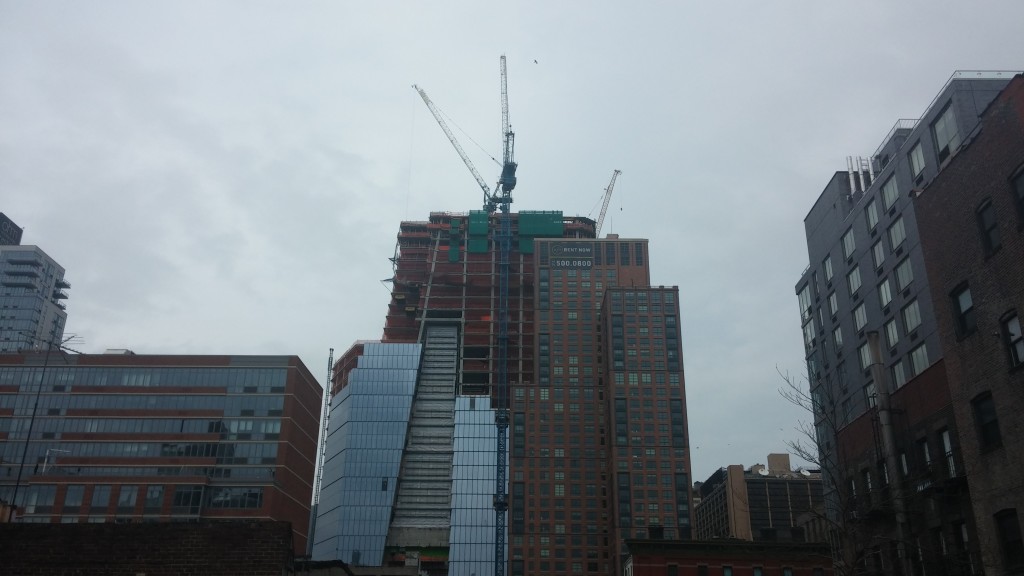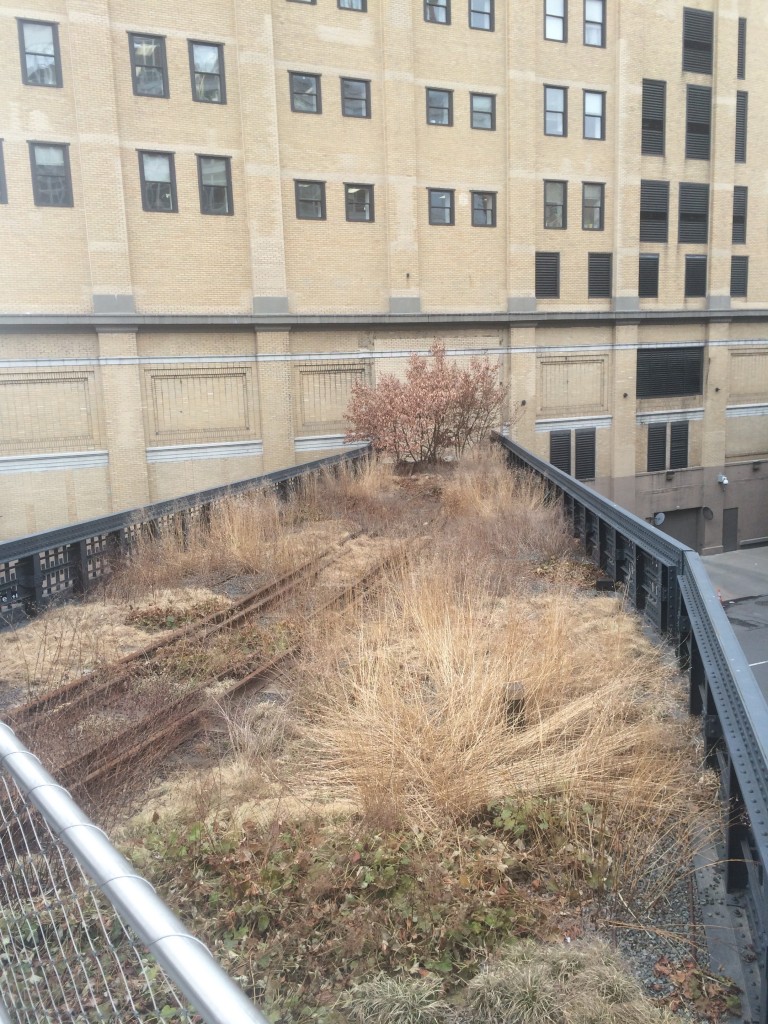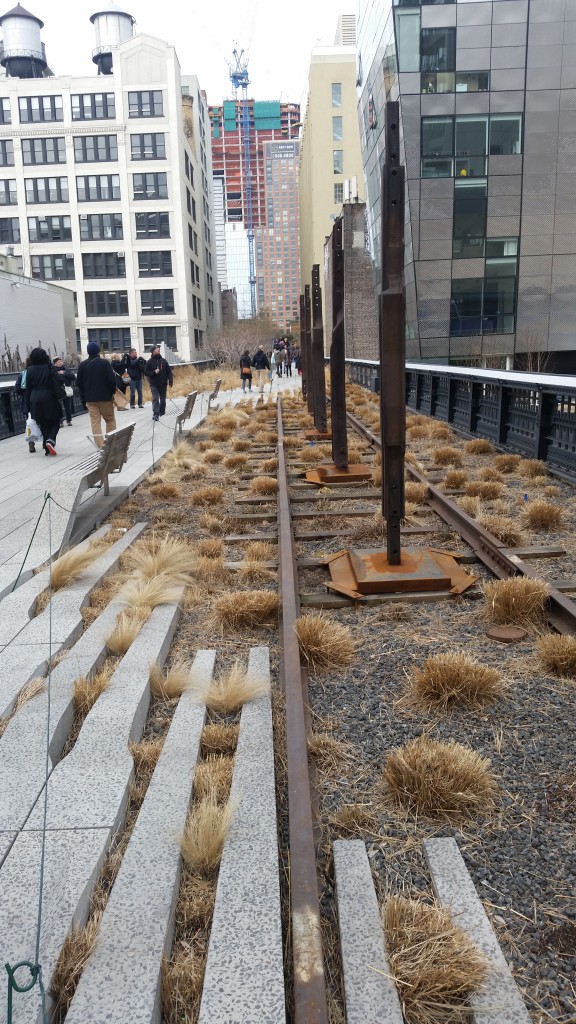By Michael Murphy
As part of the Union Semester program at the Murphy Institute, students are enrolled in a course titled “Work, Culture, and Politics in New York City.” The course readings are designed to complement trips to museums, archives, guided tours, and industrial sites such as the Brooklyn Navy Yard, allowing students to take advantage of the wealth of resources offered by the city. Recently, the class visited two outdoor parks that have changed the way New Yorkers think about the potential uses of public space, the built environment, and the waterfront.
First, the class traveled to the High Line in Chelsea to explore the intersection of industry, nature, and economic development. This former elevated railway was transformed into a public park by the nonprofit Friends of the High Line, which generated financial support from private donors and the city. It runs along Tenth Avenue until a sharp turn at West 30th Street allows visitors to meander closer to the Hudson River. During our visit, students were asked to take a photo that connects this unique urban space with the themes of the course. The image could demonstrate the interaction between the High Line and the built environment, or the ways the park is reminiscent of the labor and working class history of the tracks and the surrounding neighborhood.
Matthew Hillyer’s photo highlights the way land use and real estate values have undergone revolutionary changes in the years following the park’s opening. Expensive housing has proliferated alongside the park, and this photo centers on one building under construction in what will become the new Hudson Yards development.

Eddy Alpizar’s photo provides another view of this structure, while also foregrounding the landscape architecture and reclaimed building materials that are designed to make this an environmentally sustainable park.
Finally, Jay Dean took this photo of a loose end of track that diverges from the pedestrian-friendly walkway.

Dean said he was attracted to this image because it shows the “original purpose” of the structure, along with the railway’s “decay and eventual abandonment by showing the weeds that have grown on the High Line.” The High Line’s history is nicely framed in this image, as it also includes a glimpse of the railing that separates the modern, well-manicured park from the remnants of the city’s industrial past.
Later in the semester, the class visited Four Freedoms Park on Roosevelt Island. The park opened in 2012, after a long delay that began in the early 1970s following the death of the original architect, Louis I. Kahn. The city’s fiscal crisis seemed to have shelved the project for good until recent donations from individuals and foundations produced the financial resources to create this state park, which celebrates President Franklin D. Roosevelt’s 1941 speech in support of individual rights and social and economic justice. FDR wanted to make the Four Freedoms—freedom of speech, freedom of worship, freedom from want, and freedom from fear—a reality “everywhere in the world.” Kahn fused this radical vision for change with a granite plaza that offers a distinctive view of the city from the middle of the East River.
From the southern tip of Roosevelt Island, Manhattan looms just a short distance across the East River, bustling with activity. With the rising shimmering skyline of Queens to the east and the massive Queensboro Bridge to the north, we gazed south and surveyed New York’s watery world. From this vantage point, the city’s immense scale and the coastline’s rapid transformation were evident. Four Freedoms Park is one of several projects planned for the southern half of the island, which had previously been defined by a rocky shoreline and the ruins of a nineteenth century smallpox hospital. The relentless march of development has finally reached the island—just north of the park, the construction of Cornell University’s stunning new Cornell Tech campus has begun and additional changes are on the horizon.
The High Line and Four Freedoms Park demonstrate the way neighborhood assets, proximity to New York’s valuable waterfront, and the desires of private developers and public-private partnerships are transforming urban space in the city. Visiting these parks raised several important questions about the manner in which the city is changing today. What are the factors that stimulate urban development projects? Where are these projects located, and why? What role do citizens, community organizations, unions, and the city government play in this story? Union Semester students critically engaged with these questions to better understand the historical processes that continue to shape New York City.
Michael Murphy is currently Visiting Associate Professor of Labor Studies at the Murphy Institute.






